What is climbing chalk?
What is climbing chalk? We get to grips with the pros and cons of this climbing staple, from whether it actually works to how it impacts the environment
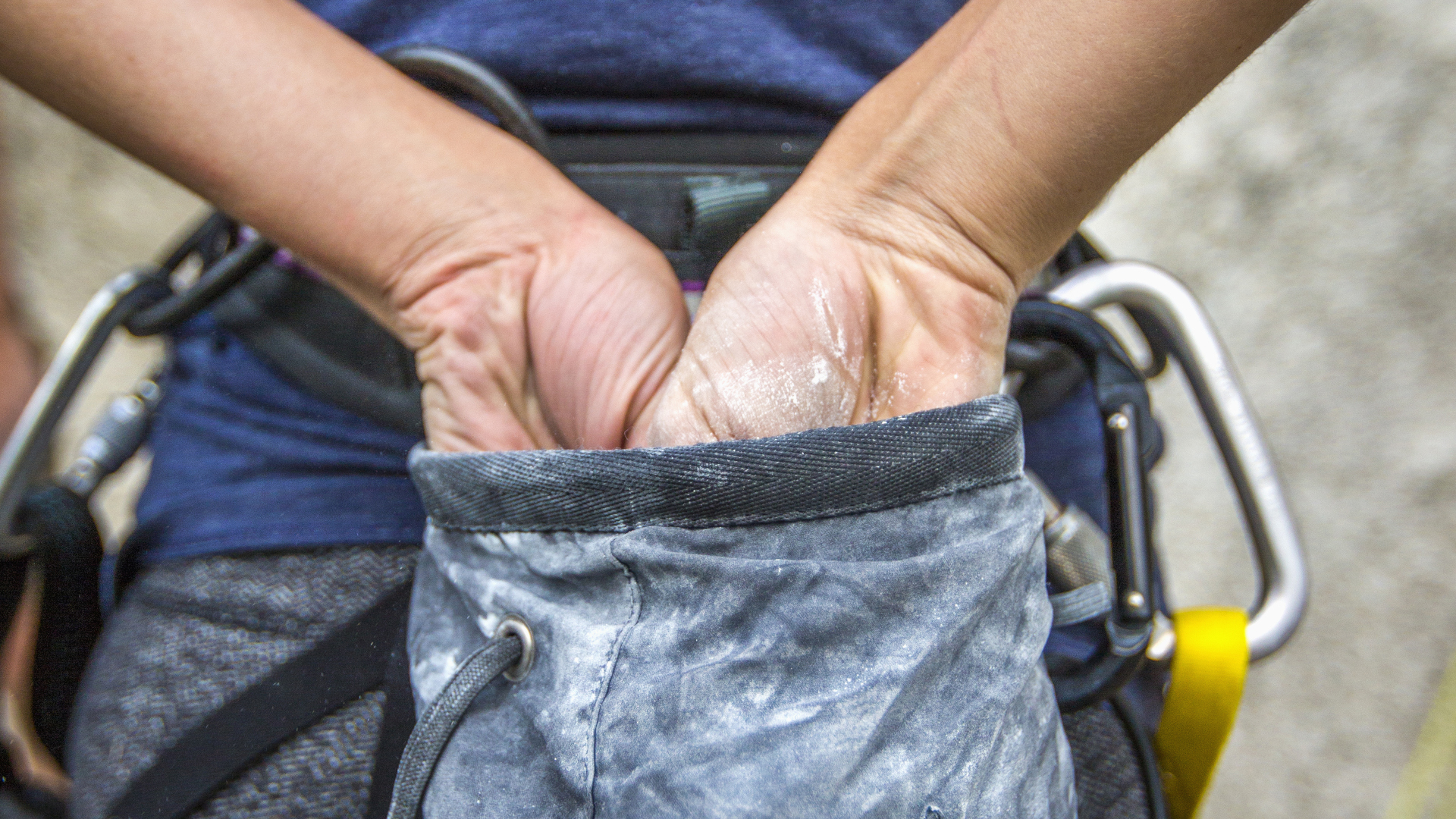
What is climbing chalk? If you’re a beginner climber and have just started nosing around the local crag or climbing wall, you’ve probably noticed the white dust everywhere, coating people’s climbing shoes, ropes and backpacks and filling the air with dust. Many climbers wouldn’t leave home without their chalk bag, and believe climbing chalk is the difference between pulling off that power move when you only have crimp holds available, and taking a fall and having to start over. But does climbing chalk actually help? And can all that dust really be good for the environment? In this article, we get to grips with the pros and cons of climbing chalk.
What is climbing chalk?
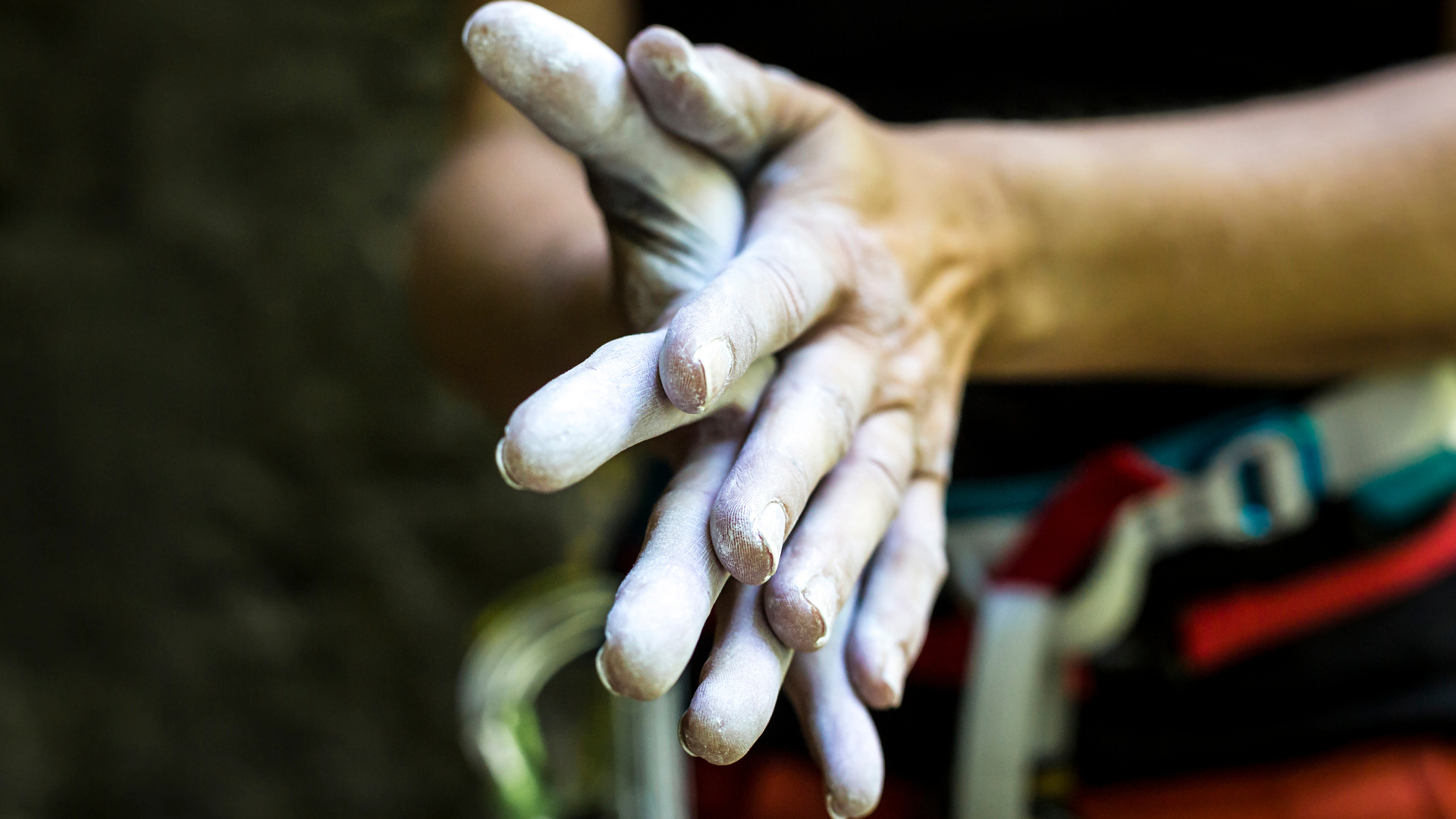
Climbing chalk is a staple piece of kit that you can use to reduce moisture on your hands, caused by sweating, so that you can improve the friction between your hands and the wall and achieve a better grip, therefore reducing the chances of falling. On your feet, your climbing shoes perform this job.
Climbing chalk typically comes in loose form, which you can pour into a small, drawstring chalk bag which you’ll attach to your harness either via a velcro strap on the bag or using a carabiner. It also comes in a block form and a liquid form, both of which are less messy. Before you start a route, you dip your fingers into your chalk and rub your hands together to distribute the chalk across all of your fingers. If you’re doing a long or difficult route or have very sweaty palms, you can reach back for more chalk during your climb, too.
Is climbing chalk different from regular chalk?
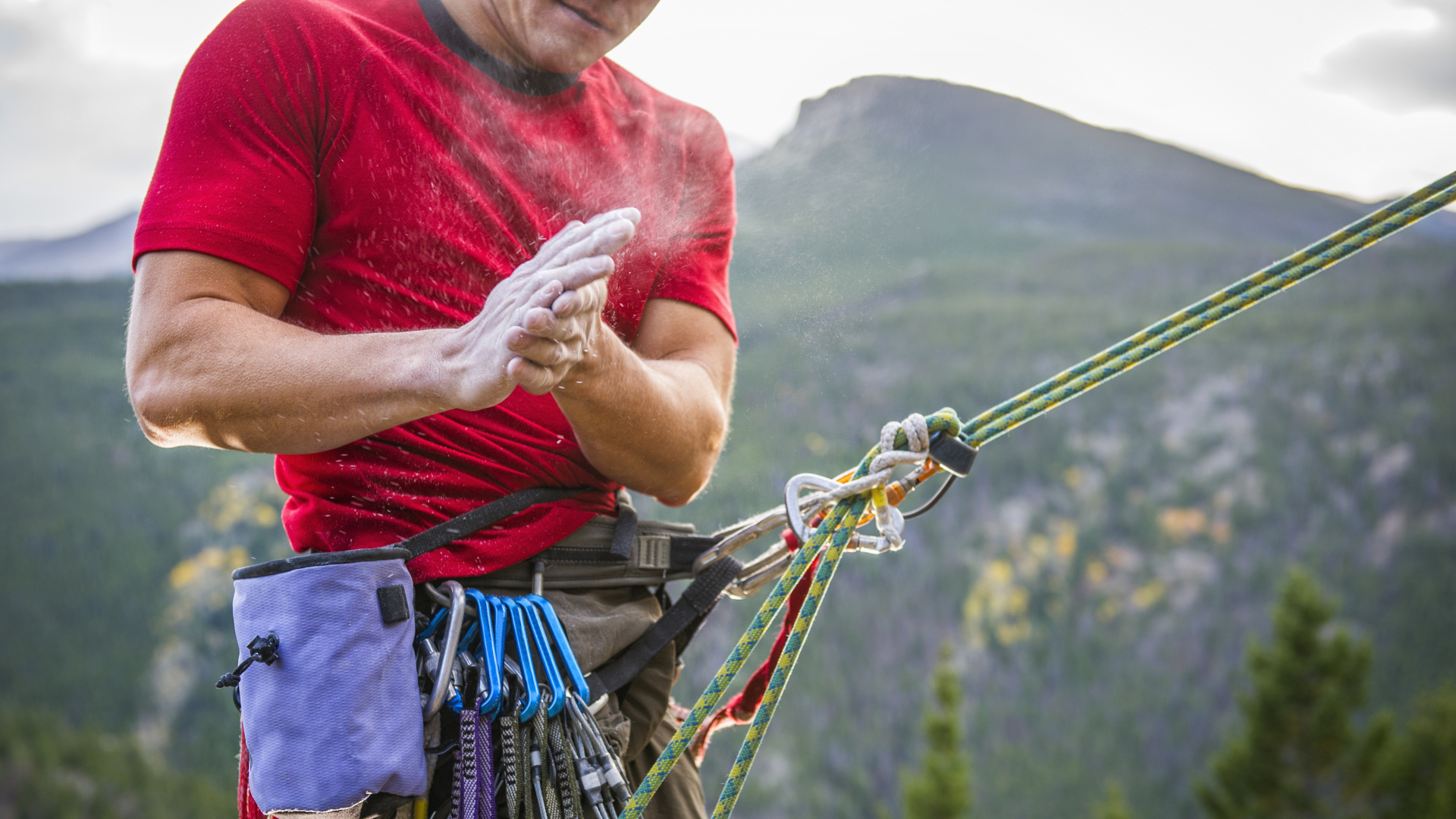
If for some reason you happen to have loads of leftover blackboard chalk lying around and are wondering whether you can use it for climbing, the short answer is no. Chalk used for drawing is made of calcium carbonate and dissolves in water, which is why it was so easy to clean the blackboard off at the end of the school day, and also means it won’t be very effective against your sweaty palms. Climbing chalk is made of magnesium carbonate, either in its pure form or mixed with other chemicals to improve its performance. Climbing chalk is the same as other athletic chalks, however, such as that used by weight lifters and gymnasts.
Does climbing chalk actually help?
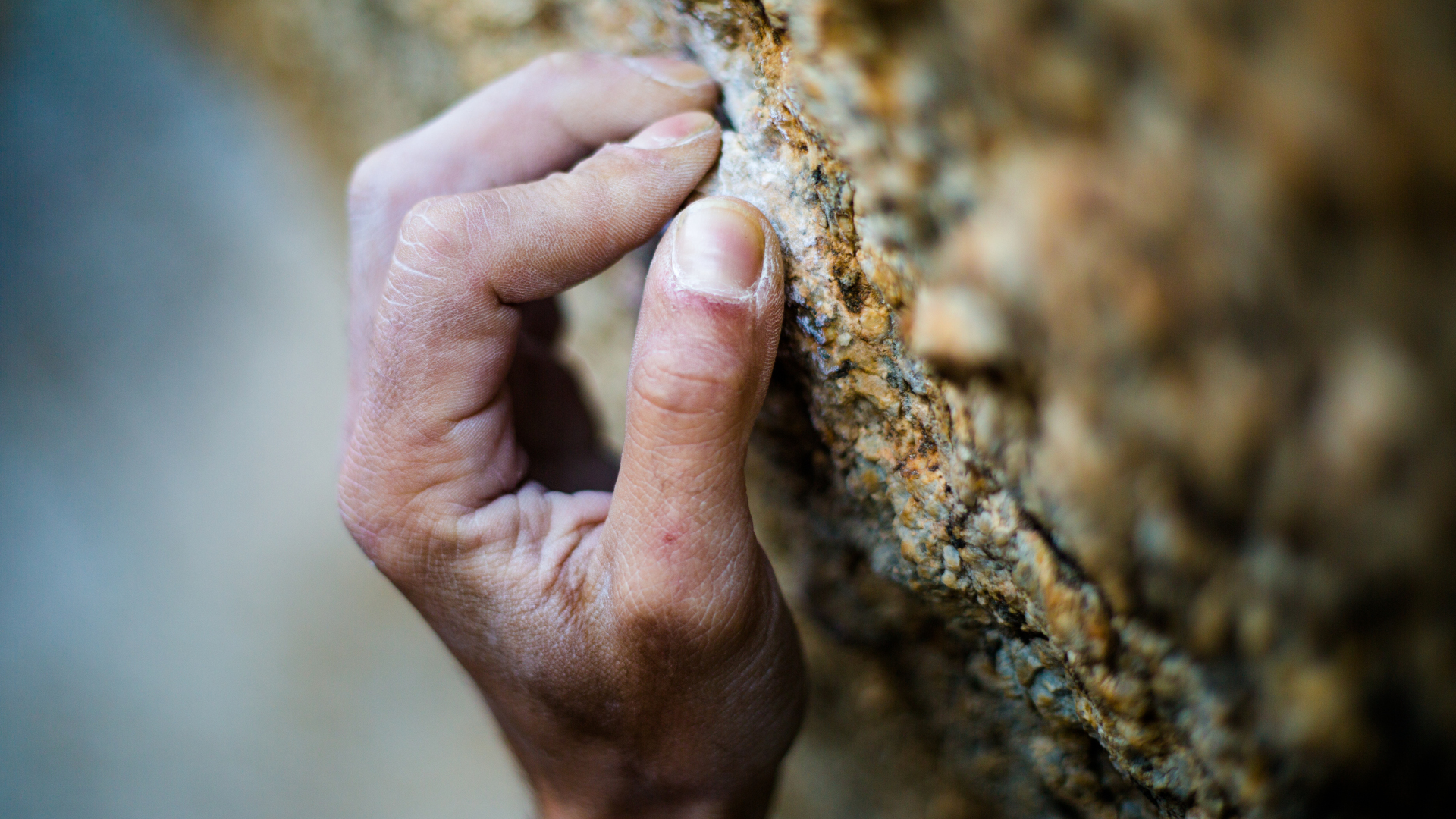
Despite a very small 2001 study published in the Journal of Sports Science which found chalk might actually make rock surfaces more slippery, most climbers do swear by it for friction. If you tend to have very sweaty palms, you’ll be glad to have the chalk when you’re climbing on less crimpy surfaces like limestone and worn granite. Even if your palms don’t sweat a lot normally, your hand muscles generally aren’t ever working as hard as when you’re scaling a rock wall, so the chances are you’ll still be glad for the added friction.
One thing that’s important to remember, however, is that climbing chalk helps your grip via friction – not by making your grip stronger – so if you keep falling off the wall, you need to climb more and consider training tools like grip strengtheners and hangboards to strengthen your hand and forearm muscles.
What can I use instead of climbing chalk?
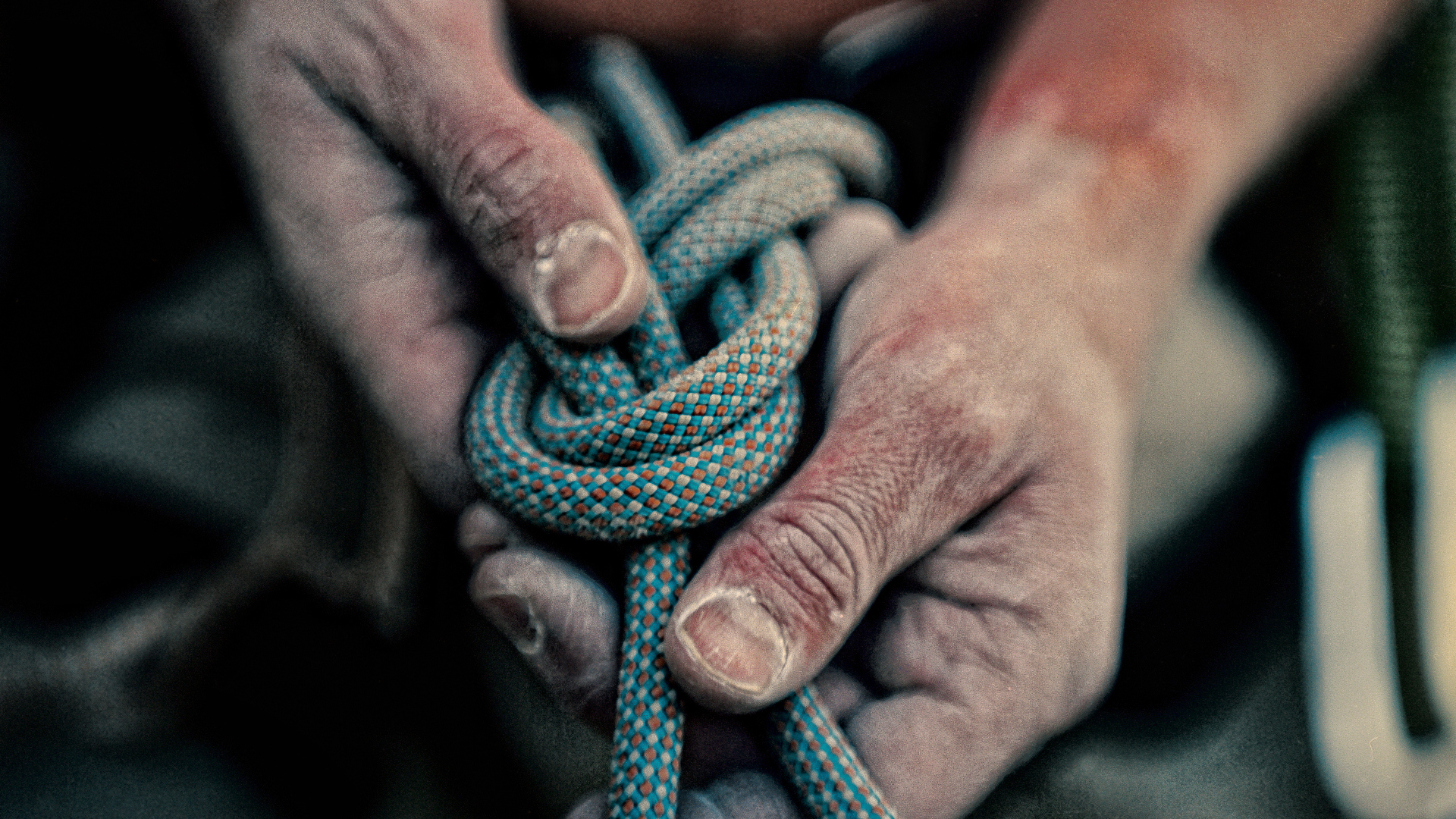
Despite the obvious advantages of rock for climbers, there are some drawbacks that can cause some, ahem, friction in the climbing community. First, it makes a big mess. You can always tell when climbers have just vacated the area because there will be chalk everywhere – it’s sometimes not allowed in indoor climbing gyms for this reason and some climbers make a point of cleaning their chalk off the wall following a climb. It also means you’ll need to know how to clean your climbing rope to keep it functioning properly.
Advnture Newsletter
All the latest inspiration, tips and guides to help you plan your next Advnture!
Next, in addition to the visual blight, climbing chalk isn’t thought to be particularly good for the environment. Not only does it require industrial mining to produce, National Geographic reported in 2021 that climbing chalk changes the pH of the rock surface and may negatively impact the growth of plants in the area.
Finally, you’ll probably end up inhaling quite a bit of it as it tends to dust up in the air which can cause coughing and isn’t great for anyone with asthma.
So, what can you use instead of climbing chalk? If you’re not doing anything too serious, you may be able to just climb without chalk. Though it’s possible to use a similar household item like talcum powder, which may not offer quite as good grip, the best alternative to dusty chalk so far is probably a liquid grip meant for climbing. These are usually high performing, make no mess and while the effects of their impact on the environment haven’t been studied, they do claim to leave less residue on the rock.
Julia Clarke is a staff writer for Advnture.com and the author of the book Restorative Yoga for Beginners. She loves to explore mountains on foot, bike, skis and belay and then recover on the the yoga mat. Julia graduated with a degree in journalism in 2004 and spent eight years working as a radio presenter in Kansas City, Vermont, Boston and New York City before discovering the joys of the Rocky Mountains. She then detoured west to Colorado and enjoyed 11 years teaching yoga in Vail before returning to her hometown of Glasgow, Scotland in 2020 to focus on family and writing.

